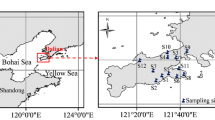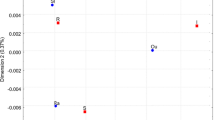Abstract.
Most antibiotics are metabolized only incompletely by patients after administration and enter the municipal sewage with the patients' excretions. Little is known about their biodegradability in aquatic environments and their role with respect to growing bacterial resistance. Therefore, the biodegradability of some clinically important antibiotic drugs as a very first step of an environmental risk assessment was investigated with the OECD closed bottle test (CBT). To assess toxicity of the test compounds against aquatic bacteria (1) a growth inhibition test (GIT) with Pseudomonas putida was conducted; (2) a toxicity control was used in the CBT; and (3) the colony-forming units (CFUs) were monitored in the test vessels. Theoretical concentrations of the test substances in hospital effluents were calculated and compared with minimum inhibitory concentrations for susceptible pathogenic bacteria. None of the test compounds met the criteria for ready biodegradability. Only penicillin G was biodegradable to some degree (27%), even when the test was prolonged from 28 to 40 days (35%). The inhibition concentrations measured in the GIT were in the same range or lower than the 50% minimum inhibitory concentrations (MIC50) known for susceptible pathogenic bacteria. CFU monitoring revealed high toxicity for sulfamethoxazole, whereas ciprofloxacin had a weak but significant effect; only for meropenem a weak but significant effect was measured in the toxicity control of the CBT. MIC50 published for susceptible pathogenic bacteria were for all compounds in the same range as the concentrations expected for hospital effluents. Therefore, antibiotic drugs emitted into municipal sewage may affect the biological process in sewage treatment plants (STPs), and they may persist in the aquatic environment and contribute to the increasing resistance of pathogenic bacteria.
Similar content being viewed by others
Author information
Authors and Affiliations
Additional information
Received: 27 July 1998/Accepted: 17 February 1999
Rights and permissions
About this article
Cite this article
Al-Ahmad, A., Daschner, F. & Kümmerer, K. Biodegradability of Cefotiam, Ciprofloxacin, Meropenem, Penicillin G, and Sulfamethoxazole and Inhibition of Waste Water Bacteria. Arch. Environ. Contam. Toxicol. 37, 158–163 (1999). https://doi.org/10.1007/s002449900501
Issue Date:
DOI: https://doi.org/10.1007/s002449900501




